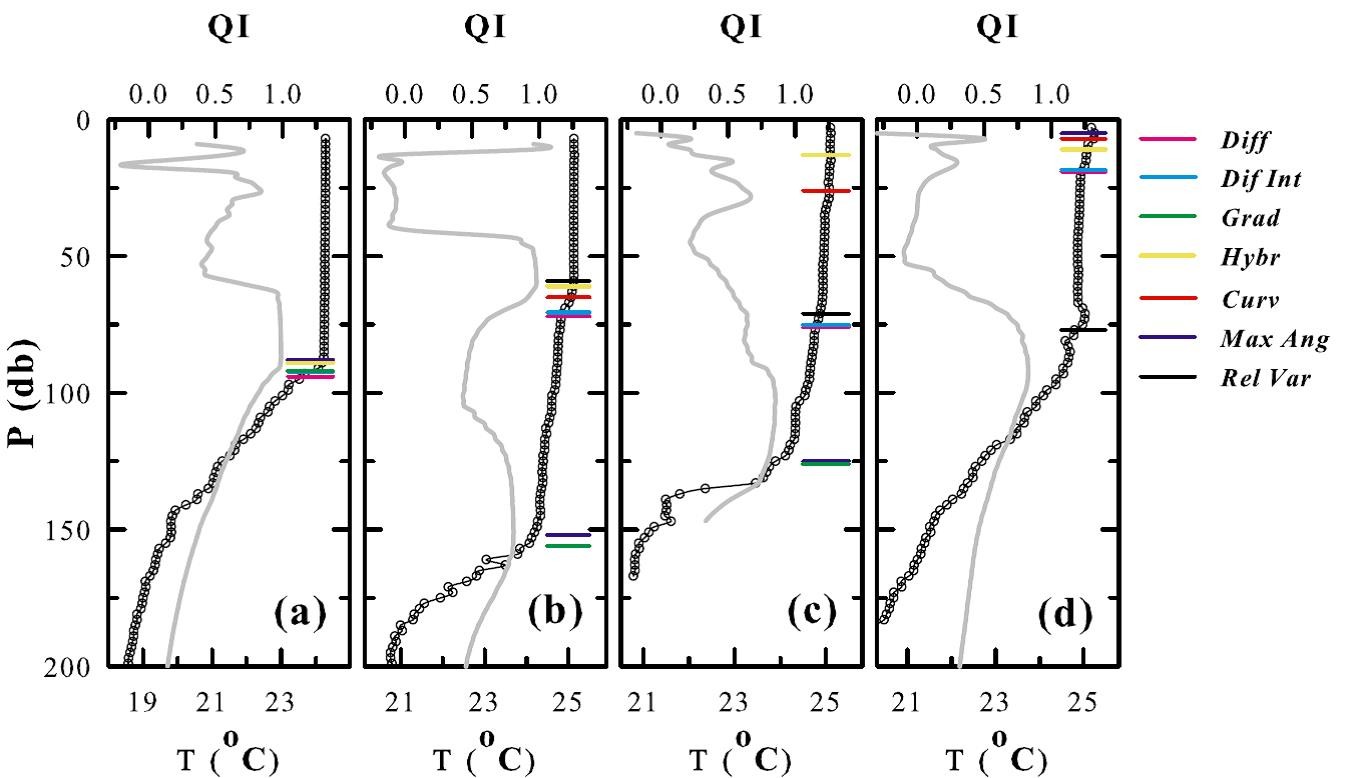A research team led by Prof. Sheng-Qi Zhou from South China Sea Institute of Oceanology proposed a new method to calculate the oceanic upper mixed layer depth (MLD). This method is independent on a fixed temperature or density threshold, and is capable of accurately determining the MLD. This work has been published on The Journal of Atmospheric and Oceanic Technology, https://journals.ametsoc.org/doi/abs/10.1175/JTECH-D-17-0104.1。
According to this method, a relative variance profile is obtained that is the ratio between the standard deviation and the maximum variation of the temperature (density) from the sea surface, and the depth of the minimum relative variance is defined as the MLD. The new method is robust in finding the MLD under the influence of random noise (noise level ≤ 5%). A comparison with other available methods, which include the threshold (difference, difference interpolation, gradient, and hybrid methods) and objective (curvature and maximum angle methods) methods, is carried out using the World Ocean Circulation Experiment (WOCE) data. It is found that for a variety of depth sampling resolutions ranging from 0.04 to 25 dbar, the new method predict MLD values that are closer to the visually inspected ones than those by other methods. Moreover, the quality index (QI) of the MLD that is determined by the new method is the highest when compared with those of the available methods. Also, the application of the new method on the WOCE global dataset yields 94% of MLD values with QI >0.5, substantially higher than those (≤ 86%) of other methods. Ultimately, it is found that the new method determines very similar MLD values when applied to temperature or density profiles globally because it identifies the base of the mixed layer rather than the uppermost depth of the thermocline. This unique advantage makes the new method applicable in many cases, especially when the density profile is unavailable.
The mixed layer influences the evolution of sea surface temperature and modulates the heat content within, which is highly related to a wide variety of phenomena, from tropical cyclone formation and phytoplankton bloom critical depth theory to climate variability. Therefore, as the mixed layer can be basically characterized by its thickness, accurate determination of the MLD is a priority in studying these important physical and biology processes in the upper ocean.

Figure 1. Potential temperature profiles (circles with black lines) and the corresponding QI (gray lines) at (a) station 65 (24.5°N, 56.7°W), (b) station 69 (24.5°N, 53.9°W), (c) station 13 (27.3°N, 79.2°W), and (d) station 60 (24.5°N, 60.4°W) along WOCE section A05. The MLDs evaluated using different methods are marked: the difference (pink), difference-interpolation (cyan), gradient (green), hybrid (yellow), curvature (red), maximum angle (blue), and relative variance (black) methods.




